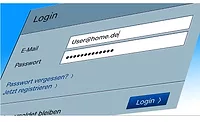Zoom introduces two-factor authentication for all users

To enhance security following a massive increase in use of video conferencing apps, Zoom introduced two-factor authentication (2FA) for all users on its client and mobile apps.
According to Zoom, the enhanced Two-Factor Authentication (2FA) makes it easier for admins and organizations to protect their users and prevent security breaches right from the Zoom platform. Two-Factor Authentication identifies online users by requiring them to present two or more pieces of evidence, or credentials, that authenticate their ownership of the account, such as something the user knows (a password or pin), something the user owns (a smart card or mobile device), or something the user has (fingerprints, voice).
The newly added security features provide added benefits such as:
- Improved security: With 2FA, organizations can reduce the risk of identity theft and security breaches by adding an extra layer of security that prevents bad actors from accessing accounts by guessing passwords or gaining access to employees’ or students’ devices.
- Enhanced compliance: Implementing 2FA helps organizations meet compliance obligations for sensitive data and customer information.
- Reduced costs: For small businesses and schools, it can be expensive to pay for an SSO service. Zoom’s 2FA provides a free and effective way to validate users and protect against security breaches.
- Easier credential management: 2FA provides an additional level of security that spares users from constant password management.
Zoom users will now have the option to use authentication apps that support Time-Based One-Time Password (TOTP) protocol (such as Google Authenticator, Microsoft Authenticator, and FreeOTP), or have Zoom send a code via SMS or phone call, as the second factor of the account authentication process.
For more information, including detailed steps on how to enable Zoom's 2FA, please visit https://blog.zoom.us/secure-your-zoom-account-with-two-factor-authentication/
Looking for a reprint of this article?
From high-res PDFs to custom plaques, order your copy today!






